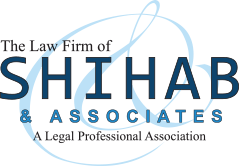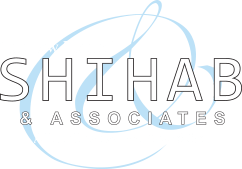Employers are required to indicate the location an employee is going to work on both the I-129 Form and the LCA. This becomes more complicated when considering the varying definitions of “places of employment,” “worksites,” and “non-worksite locations.” Traveling, or “roving employees” are, and have been, critical to many businesses and may include: a computer engineer sent out to “troubleshoot” complaints regarding software malfunctions; a sales representative making calls on prospective customers or established customers within a “home office” sales territory; an auditor providing advice or conducting reviews at customer facilities; and a physical therapist providing services to patients in their home within the area of employment. It is important that employers fill out the LCAs correctly, with the understanding that USCIS has begun to request more detail regarding worksites and itineraries for H-1B petitions generally, and can be even pickier when dealing with a roving employee.
Non-Worksite Locations
An employer must file an LCA for any location considered a “place of employment” which is defined as “the worksite or physical location where the work is actually performed.” There are two exceptions to this which are “non-worksite locations” and use of the short-term placement rule. Non-worksite locations are never intended to be permanent. Such a location might include a restaurant to meet with a client, or a client’s place of business to conduct an audit. Normally, the H-1B worker is visiting a customer company worksite to provide a service for a very limited period of time (e.g., the auditors, troubleshooting engineers, and the physical therapists cited above).
Short-Term Placement Rule
If the location is a worksite, the short-term placement rule is helpful when there is no LCA in place for the occupation in question in the area of intended employment. An employer may make a short-term placement or assignment of an individual H-1B worker at any worksite or combination of worksites in a non-LCA area for a total of 30 workdays in a one-year period (either calendar year, or fiscal year). That placement may be expanded to 60 workdays in a one-year period if the employer can show that the worker maintains a workstation at the permanent worksite, spends a substantial amount of time at the permanent worksite, and maintains a residence in the area of the permanent worksite. Any more time than this will require a new LCA.
Using Multiple-Slot LCAs
ETA Form 9035 allows employers to submit LCAs for more than one beneficiary in the same occupation. The use of a multiple-slot LCA can be particularly useful when an employer needs to move workers to new locations but has some uncertainty about how long they will stay there or exactly how many workers might be needed.
Working in Multiple Locations
If a foreign national will be working in multiple locations over the course of the H-1B validity, the I-129 petition should include a complete itinerary of the foreign national’s engagements, including the dates of each engagement, the names and addresses of the actual employers, and the names and addresses of the locations where the beneficiary will be placed. There also must be an LCA that covers each employment location. ETA Form 9035 allows three separate areas of intended employment to be included.
If the employer expects to place the H-1B worker in more locations, it is best to include multiple LCAs so that each area is covered. If an employer ends up needing to move a worker to an area where there is not already an LCA in place for the occupation, and the short-term placement rule is not available or would not provide enough time, a new LCA must be filed.
New Unanticipated Work Sites After the I-129 Is Filed
When the short-term placement rule is unavailable, there needs to be an LCA in place in any area for a given occupation before moving workers to that location. If the LCA is in place before the move, and as long as job duties remain the same, current practice makes it unnecessary to amend or file a new H-1B petition. Of course, in practice, it may not be possible for companies to completely and accurately predict all of the projects a roving H-1B employee may be required to undertake within a three-year period. Fortunately, as long as the employer files the petition in good faith and makes a bona fide attempt to document a roving employee’s anticipated projects, a petitioner may deal with an employee’s unanticipated geographical move by filing a new LCA that satisfies the wage and hour obligations, provided that the LCA is certified and posted according to the regulations.
How to Contact UsWith all the rules and regulations involved in the H-1B process, it is always advisable to consult a knowledgeable attorney. If you have questions about an immigration visa or green card matter, and/or you need help in an immigration process, please contact our immigration attorneys or call The Law Firm of Shihab & Associates Co., LPA at the nearest office close to you to consult with an attorney. Our law firm handles various matters including Green Cards and Permanent Residence, family immigration, immigrant visas, non-immigrant visas, employment visas and H1B visas, Investor Visas, PERM applications, and many more. Please contact us and experience how our law firm can assist you in your immigration matters. Whether you are an employer, an employee or a family member, The Law Firm of Shihab & Associates, Co., LPA has competent, responsive and innovative lawyers who can make your immigration experience pleasant and seamless.

